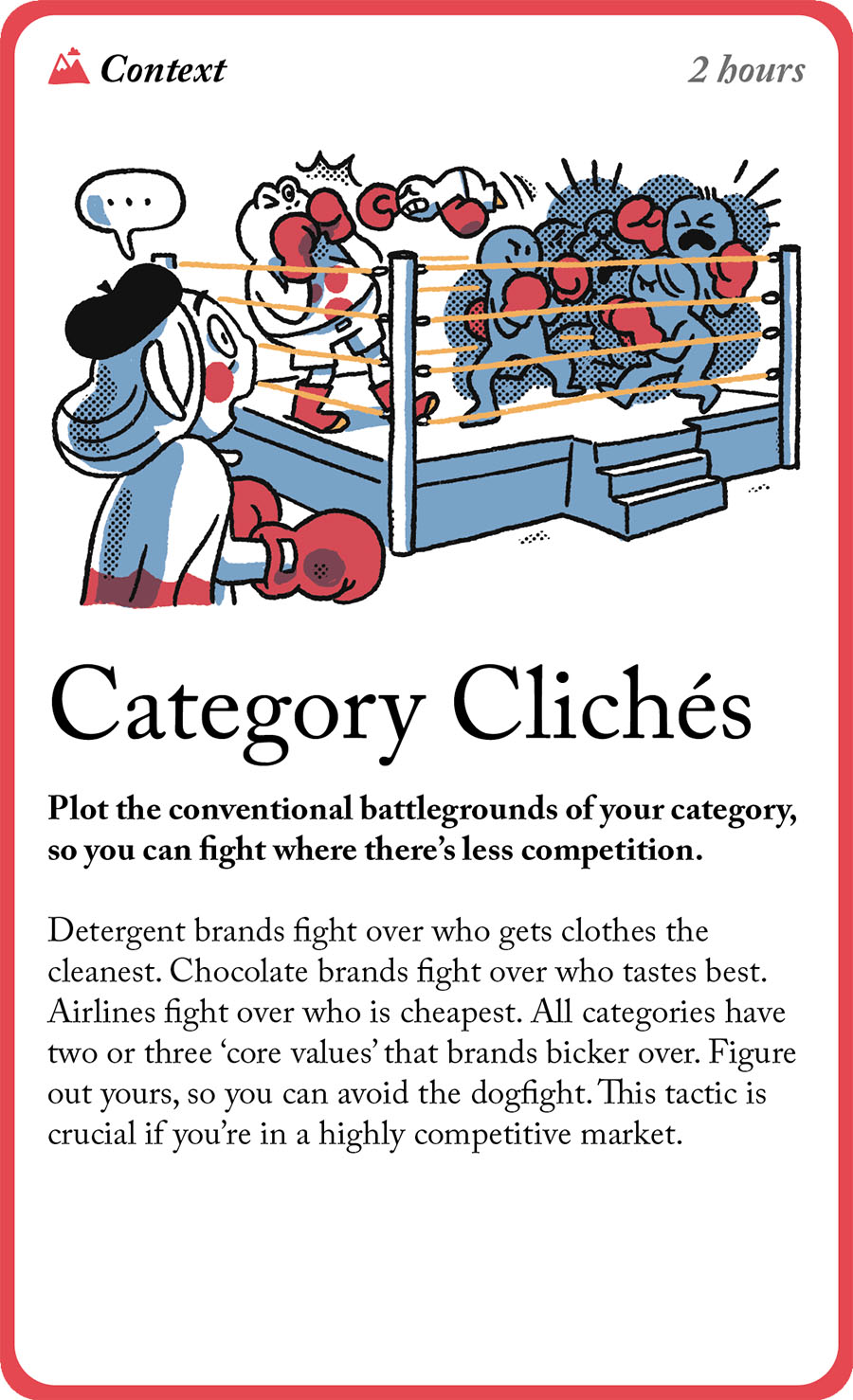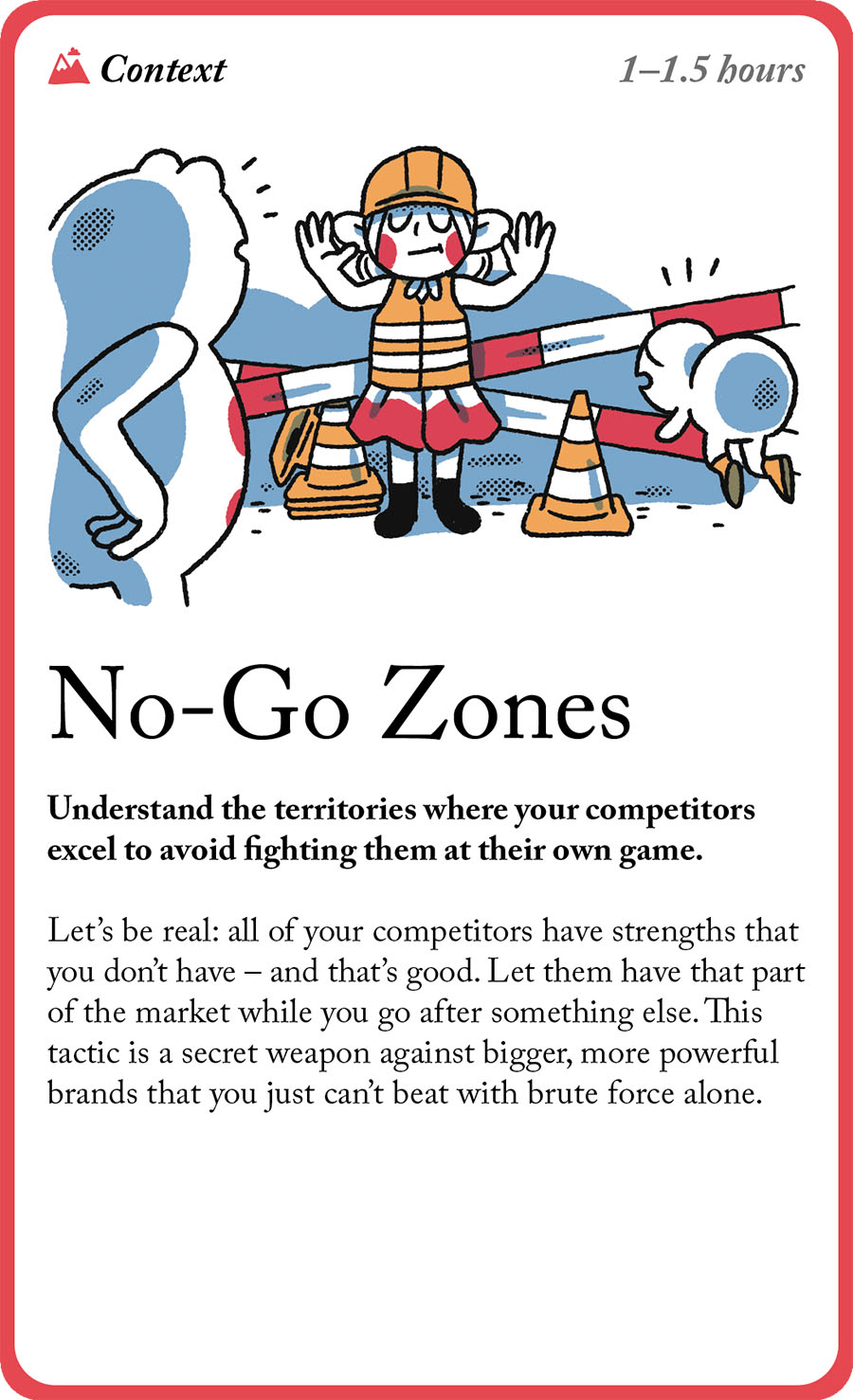Storyteller Archetypes Introduction
Differentiate your brand. Daydream character types into branded realities.
There’s a new deck that’s coming out that I am really excited about that was created to complement the Storyteller Tactics deck. It’s also going to work hand in hand with the Brand Tactics deck. The new deck is called the Storyteller Tactics Archetypes extension deck.
The archetypes deck has a smaller number of cards in the deck. The intent behind it was to act as a supplement to other storytelling decks – the Storyteller Tactics and the Brand Tactics, Innovation Tactics and strategy Tactics decks.
Archetypes help you to build characters because they get down to root drives that many people and brands have, but that result in unique expressions. Let’s start with an archetype that evokes the earliest people. The hunter archetype could drive someone to hunt animals, but it could drive a detective to solve a case and catch a criminal. Adding a drive to learn, a “student” archetype, the hunter could become an explorer or discoverer – maybe a genetic scientist, photographer or anthropologist. By discovering root drives through archetypes work, you are able to build more consistent, relatable stories and brands.
Storyteller Archetypes for Brand Building
Archetypes can help us in business and brand building by identifying underlying drives in the community we serve.
If we take the approach to brand building that is being used right now by Procter and Gamble, Nike, Apple and similar well-branded companies, we don’t actually start with the product or service. We start with the customer. We need to understand the demographics and psychographics of the people our brand serves.
We don’t know what they need and what we will offer until we understand them.
In many instances however, small businesses are not designing completely new products and services as multinational corporations are. The majority of small and medium sized businesses are actually delivering products and services that have already been created by existing brands. Their goal with branding is to find alternate ways, or more seamless ways maybe, of providing those products and services to customers.
Often, the best way for suppliers, retailers and independent providers to differentiate themselves is through quality service.
But in a lot of ways every company wants to say, “Hey, we provide great service.”
So how does the local retailer or supplier go about positioning and differentiating itself if the field is packed with competitors pursuing the same value proposition?
The Brand Tactics deck and Archetypes deck provide actionable tools for developing and differentiating your brand.
The first shift in thinking that business leaders had to make at the dawn of branding was to think of the company as a character, not as an operating unit. Not as a product.
To do that for your organization we need to find out what your character is in relation to your various audiences. Your audiences include your customers, they include people who don’t like your brand, they include customers of other people’s companies, they include intermediaries like the government that create regulations on corporate behavior that impact how you can sell and what you can sell. Your audiences even include your employees and business partners who share in the value chain you are creating.
Branding goals can include building trust, awareness, belief in your brand, confidence that carrying your products, and that buying from your store provides something important. All of these are elements of differentiation.
So when we’re trying to differentiate ourselves, one of the ways that we can do it is to really examine our brand’s character by asking a few simple questions
How does my brand conduct itself in the world and why?
What are the other characters that are in my competitive landscape? – other brands, and customer archetypes as well.
Several cards in the brand tactics deck focus on how we differentiate ourselves and one of those is “Only is better than best.” Many companies try to be the best in their category, but that becomes a never-ending battle of “king of the hill.” If we can be the only company that does something, then we stand out as the one and only, not a choice among many.
A lot of companies cluster, they group around a particular idea. So how do we go about breaking that out of a cluster and doing something different than everyone else? There are a number of cards that help you get there. Some that I like the most out of this deck for developing new ideas are “Category Cliches,” “No Go Zones,” and “Weird or Normal?”
And let’s see what else. “Contrarian Value” is a good one also. So if I can take a look at those cards right there, I’ve got a good starting place for using Archetypes to build my brand.
Don’t worry. We will get back to the archetypes to show how they relate to these Brand Tactics cards.
If all the companies in your category are service-focused and are providing an extended return window, online chat, and phone support, if my company does those things, it’s just a follower, it’s just going to continue to be like everybody else.
I can mix “category cliches” from the Brand Tactics with archetypes to ask myself, “What are these companies like? What archetypal characteristics of these companies come to light?”
If I lay out those archetypes I can start to see some trends.
Archetypes for brand character development
Archetypes Cards by Pip Decks
For a long time, I used a tarot deck to do archetypes work. The major arcana represents a cyclical narrative wherein the fool archetype goes out into the world and takes a lot of risks. The fool doesn’t have a lot of knowledge and he’s doing things foolishly that he doesn’t even understand. The fool meets the popess or high priestess, sees the tower fall, faces fate in the Wheel of Fortune. Each of these cards is an archetype in and of itself. Think of the lottery or reality tv show as “Wheel of Fortune” brands. As another example, Preppers draw on the falling tower as an icon for why they must be always ready.
So you could say, “My brand, my character is the Wheel of Fortune and we create opportunity to take a chance.” So, we could draw from these mythical types of archetype, but the Pip Decks Archetype expansion pack does something fantastic.
The pip decks archetypes don’t require such a massive story arc as described by the tarot, nor does it need 22 archetype cards as in the major arcana. And while the Tarot tends toward the esoteric, the Pip Decks Archetypes remain grounded in personalities and ways of engaging with the world that are both practical and applicable.
The simplicity and clarity of these cards emerge as you use them because the archetype cards can be combined, reversed, or layered in the character profiles you create with them. And when you’re creating brand stories, each brand in a crowded market space can become an archetype-influenced character.
The storyteller tactics archetypes deck boils archetypes down to the core archetypal drivers. What’s great about that is it removes anyone else’s story arc – no Roman gods or soothsaying to get in the way. The core archetypes can be combined. Just like the hunter character can be combined with a learning character to create a researcher or explorer, these traits can be built up in primary, secondary and tertiary layers to create new archetypes. In fact archetypal characters are unlimited. You can take your brand or your characters as far as you want.
For example, in Brand Tactics, when you’re trying to find a way for your brand to stand out, you can use the archetypes deck to imagine the characteristics of your competitor brands. Where do they sit in the minds of customers and audiences?
You’ll probably see pretty quickly that your competitors group around some shared character types. You can take those archetypes, those characters and set them aside. In Brand Strategy Pip Decks lingo, those are your “Category Cliches” and “No Go Zones.” You don’t want to copy your competitors for fear of simply becoming another follower brand.
So we can map out your competitors. That doesn’t yet tell us what your brand should do to differentiate itself. But what we can do is to set those archetypes to the side and look at what we have left. “What if my brand acted and behaved in any of these other ways, and used that difference to provide value to my core audience?”
Once you’ve selected a different root driver you can evaluate how that character archetype might differentiate your business within the Brand Tactics framework.
Now, the rest of the archetypes represent a pool of possibilities if you want your brand to stand out from the pack in a truly revolutionary way. You can take some time to day-dream a world in which your brand character is represented by each of these alternate character traits.
What if all of the main brands in your category are trying to be Rebels? Well, the Rebel archetype has a weakness. The shadow side of the Rebel is the reality that “breaking the rules” can easily become cheating and unethical. The Rebel doesn’t respect others or the systems that support culture. A Rebel might seem like your friend, but then stab you in the back when you are too conventional.



Is it weird or is it normal? Sometimes, something that is weird is good, and sometimes normal is good. “Weird” can stand out, it can be really unique. “Normal” can be kind of bland in an “every day” kind of way, or it can be your go-to that you use every time.
So you can take Category Cliches plus Archetypes to identify a real brand differentiator, Weird or Normal can help you discover ways audiences can integrate or reject your new message, and then you can evaluate no-go zones. The no-go zones are where your competitors already have deep experience and market confidence. You can use this card to really clarify where to focus.


You don’t want your archetype to be the same as another brand’s. So, when you identify what everybody else is focused on, you can set that as part of your no-go zone. Even when it comes to product characteristics, behaviors, and so forth.
The “Contrarian Value” card empowers you to build value in this alternate space, standing out in a completely different way. Combining Brand Strategy with Archetypes provides you with tools for creating a differentiated brand. Together, these card decks provide a foundation for changing how your company operates and how you behave in the marketplace.
As Alex Smith, author of Brand Tactics points out, when you go the exact opposite direction of the major players, it’s hard for them to compete because they would have to undo the work they have done to build the brand character that they’ve put in so much time and money to establish. Archetypes are a powerful story-driven way to allow you to stand out while putting your competitors on their heels.

Once you know these character traits, use your Storyteller Tactics deck to take your newly developed brand character on a journey.
The decks Archetypes, Brand Tactics, and Storyteller Tactics are fantastic story-based brand tools any company can use to convey their brand character within the company, and across the globe.
You can get 15% off your entire Pip Decks purchase when you use our affiliate link pipdecks.com/murdockmediaproductionllc or click any of the images below to visit the shop and instantly apply your discount.
Want to learn more about brand development?
In addition, increase your ability to create brand platforms and brand communications frameworks by taking my class: Brand Building to Create a Big Impact.
Stay Connected with Murdock Media Production!
If you like this content, subscribe to our YouTube channel for more on story archetypes, brand storytelling, and brand development.
And drop me a line with the form below to let me know how your brand building is going. I look forward to seeing how you discover your brand and go with your audience on your own unique journey.









